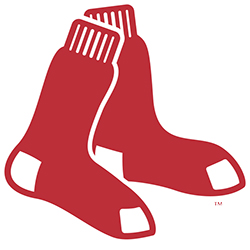 Another MLB team is upping its real-estate game, as the Boston Red Sox formally announced an effort to redevelop four parcels surrounding Fenway Park along Jersey, Lansdowne and Van Ness streets, and Brookline Avenue.
Another MLB team is upping its real-estate game, as the Boston Red Sox formally announced an effort to redevelop four parcels surrounding Fenway Park along Jersey, Lansdowne and Van Ness streets, and Brookline Avenue.
The move followed years of investment by Red Sox ownership into Fenway Park, including the construction of a new theater adjoining the ballpark. Technically, this development isn’t coming from the Red Sox proper, but rather from Fenway Sports Group Real Estate, a partnership between Fenway Sports Group and the owners of the apparel company ’47 Brand, as well as veteran developer WS Development. The announcement of this specific plan came this month, but planning for the redevelopment has been ongoing for years. From the Boston Globe:
The codevelopers said that while extensive planning has begun, they’re still working out many details, such as cost, square footage, building heights, and the exact mix of what they intend to build. They’re also considering the prospect of one day building out over the Massachusetts Turnpike behind Lansdowne Street, which would enable more ambitious development. On Monday, they notified community leaders and elected officials from the Fenway neighborhood about the project….
In addition to housing, retail, office, and lab space ― and maybe a hotel ― the development could allow the Red Sox to leave their cramped offices in Fenway Park. That would also free up room in Fenway’s concourses. A new ’47 Brand team store will fit in somewhere, if not necessarily in its current spot across from Fenway’s Jersey Street gates.
Longer-term, building something larger on a deck over the Mass. Pike could vastly increase the scale of development and help knit together the Fenway, Back Bay, and South End neighborhoods. But so-called air rights developments are notoriously complex — Fenway Center took two decades of planning — so the group decided to push ahead with a smaller project first.
As of now it’s almost easier to note which MLB teams are not boosting real-estate efforts than those who are. We’ve seen real-estate efforts in the MLB for decades now, but the efforts have ramped up in recent years. The Atlanta Braves really boosted the movement with the opening of Truist Park and the associated Battery mixed-use real-estate development, but before that teams like the San Francisco Giants had already been working on developments next to their home ballparks. The Colorado Rockies have invested in real-estate development next to Coors Field, the St. Louis Cardinals developed Ballpark Village next to Busch Stadium, the Chicago Cubs invested heavily in the Wrigleyville redevelopment that included changes both to Wrigley Field and the surrounding neighborhood, and the San Diego Padres–who helped launch the trend with the construction of Petco Park, transforming downtown San Diego–won city approval for redevelopment of a desirable parcel next to the ballpark. Most recently Los Angeles Angels owner Arte Moreno negotiated a deal to purchase the 153-acre Angel Stadium site and redevelop it into a mixed-use site. It would be amazing if new ballparks in Tampa or Oakland didn’t include some sort of real-estate development as well; similarly, many experts say the real estate surrounding Citi Field is ripe for development–something the Wilpons never could accomplish.
Why does real-estate development appeal to MLB teams? It’s a way to leverage ballpark improvements outside the realm of baseball economics. Revenues from real-estate development do not appear on team ledgers and thus aren’t subject to luxury taxes and the like, much to the chagrin of agents like Scott Boras.
